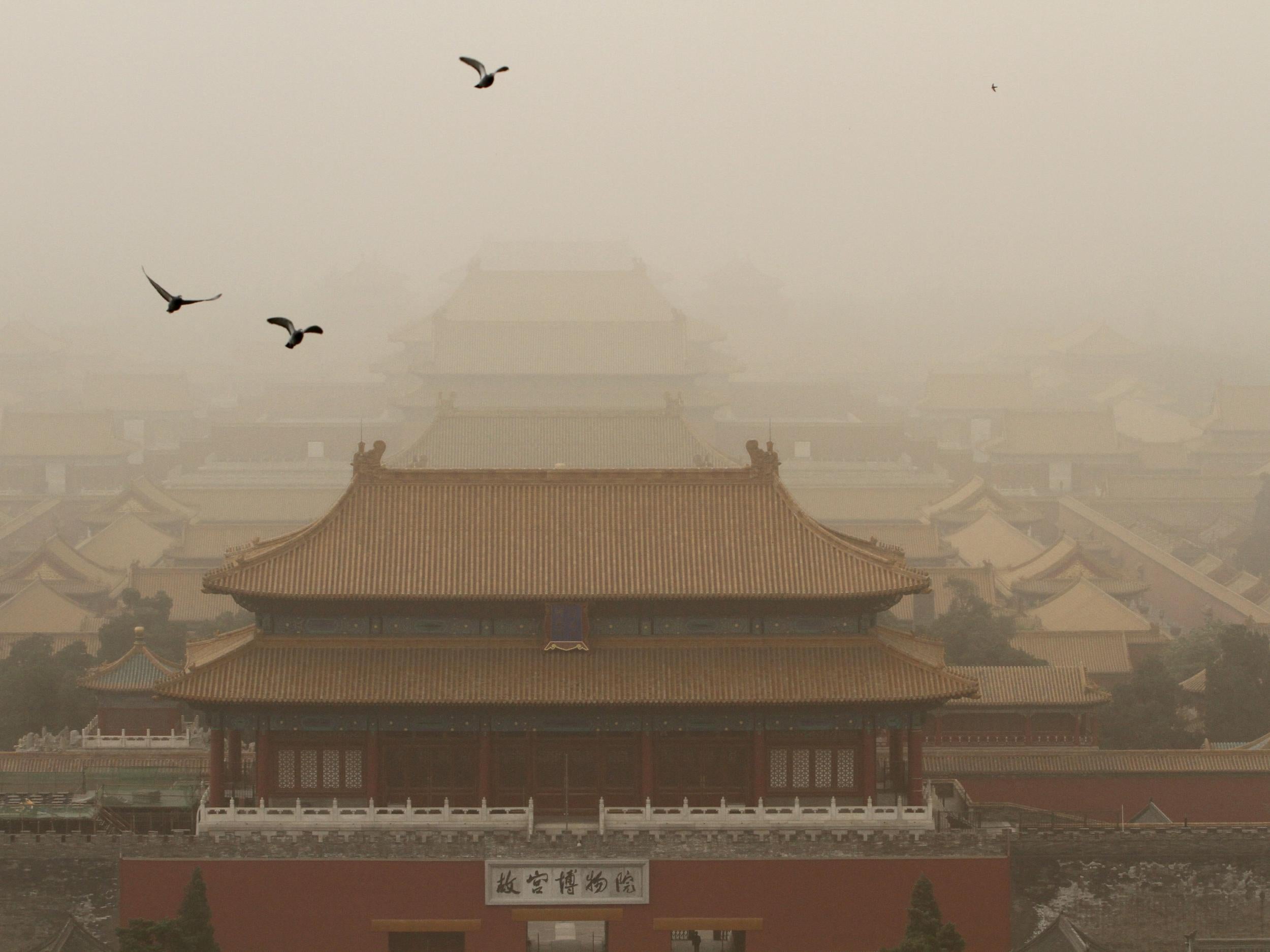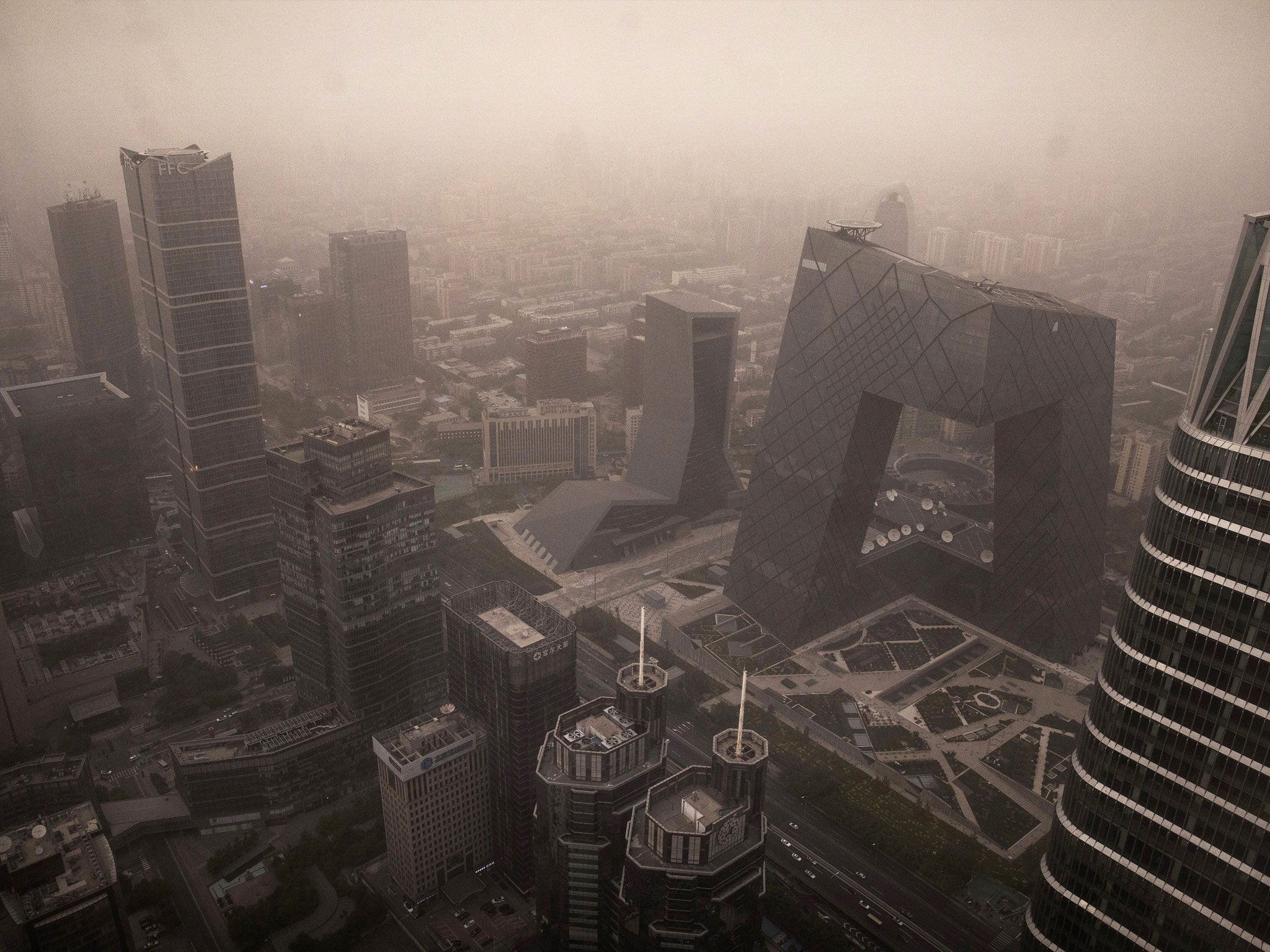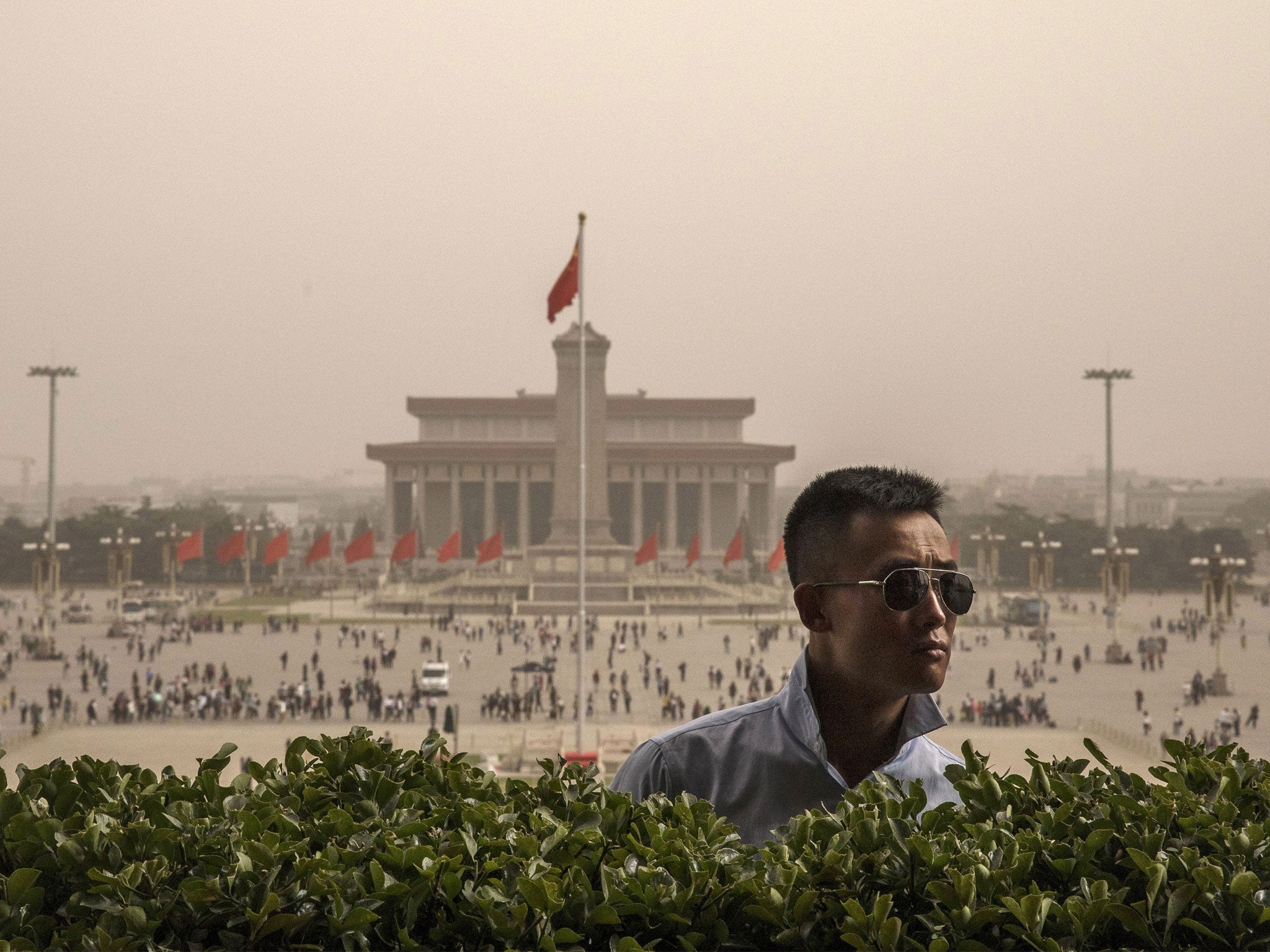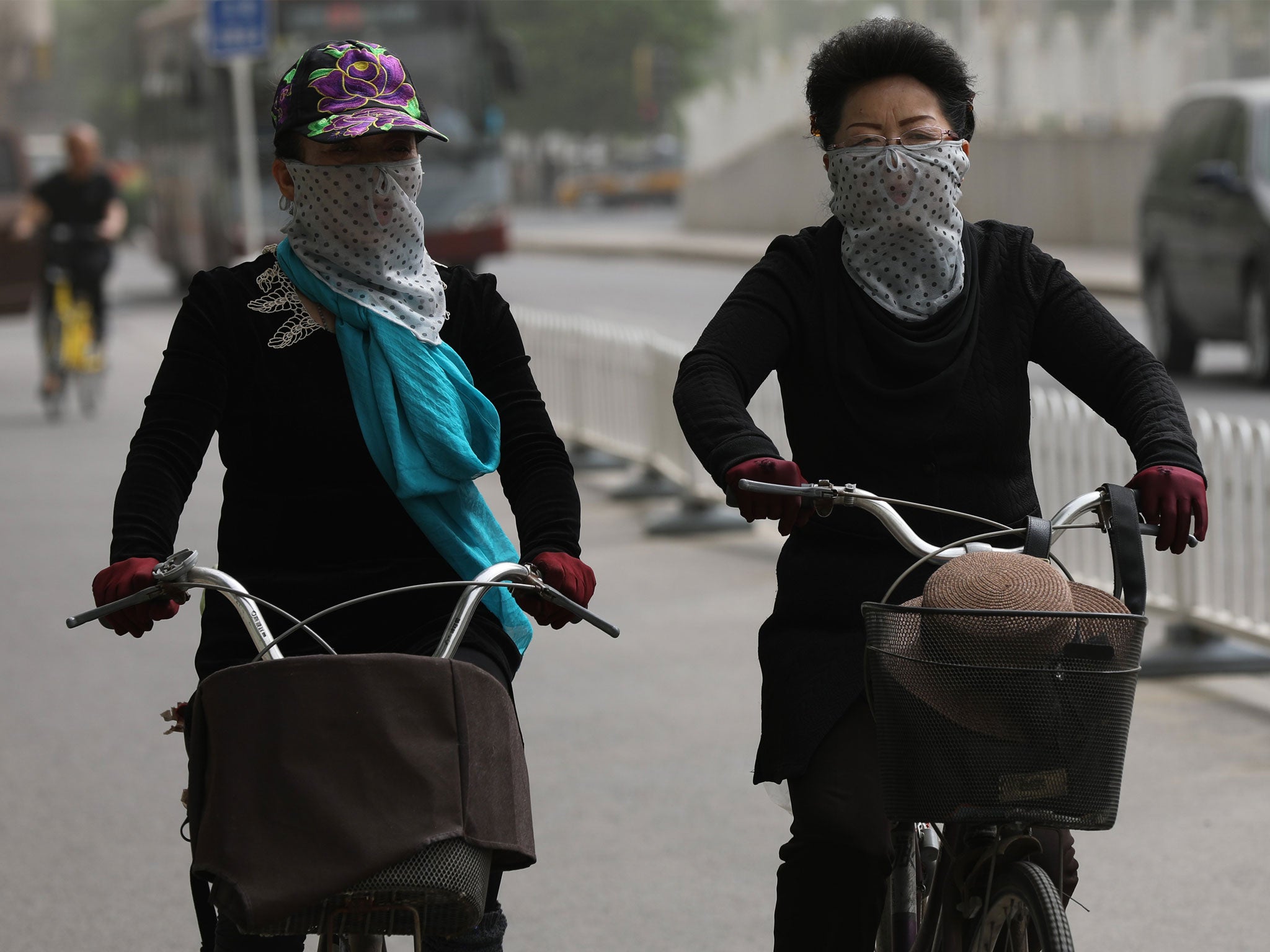Dust storm envelops huge swathes of China as air quality worsens
Spring winds gathering sands from Gobi Desert and causing chaos across northern cities

Your support helps us to tell the story
From reproductive rights to climate change to Big Tech, The Independent is on the ground when the story is developing. Whether it's investigating the financials of Elon Musk's pro-Trump PAC or producing our latest documentary, 'The A Word', which shines a light on the American women fighting for reproductive rights, we know how important it is to parse out the facts from the messaging.
At such a critical moment in US history, we need reporters on the ground. Your donation allows us to keep sending journalists to speak to both sides of the story.
The Independent is trusted by Americans across the entire political spectrum. And unlike many other quality news outlets, we choose not to lock Americans out of our reporting and analysis with paywalls. We believe quality journalism should be available to everyone, paid for by those who can afford it.
Your support makes all the difference.A dust storm has enveloped a swathe of northern China, dragging down air quality and visibility and prompting warnings for children and old people to stay indoors.
Spring is China's dust-storm season, when winds whip across the Gobi Desert picking up fine sand and dust particles and dumping them along a belt of heavily populated land further south.
The official People's Daily said the worst of the storm would be concentrated on a remote area along the Mongolian border, but that Beijing and locations as far away as the remote northeast of China would be affected for at least 24 hours.
Official data from the Beijing government showed average readings of small breathable particles known as PM 2.5, a major component of China's air quality index, had risen to 630 micrograms per cubic metre in parts of the city by Thursday morning, though it dropped slightly later in the day.
The World Health Organisation recommends concentrations of just 10 micrograms.
The city government said the storm would affect the capital until Friday afternoon when air quality would improve as a high pressure system moved in.



State television said old people and children should stay inside to avoid the worst effects.
The dust storm underlines the environmental problems China faces, added to concern about choking smog from coal powered power plants and factories that also periodically covers much of north China.
The government has spent billions of dollars on projects to rein in the spread of deserts, planting trees and trying to protect what plant cover remains in marginal areas.
Reuters
Join our commenting forum
Join thought-provoking conversations, follow other Independent readers and see their replies
Comments